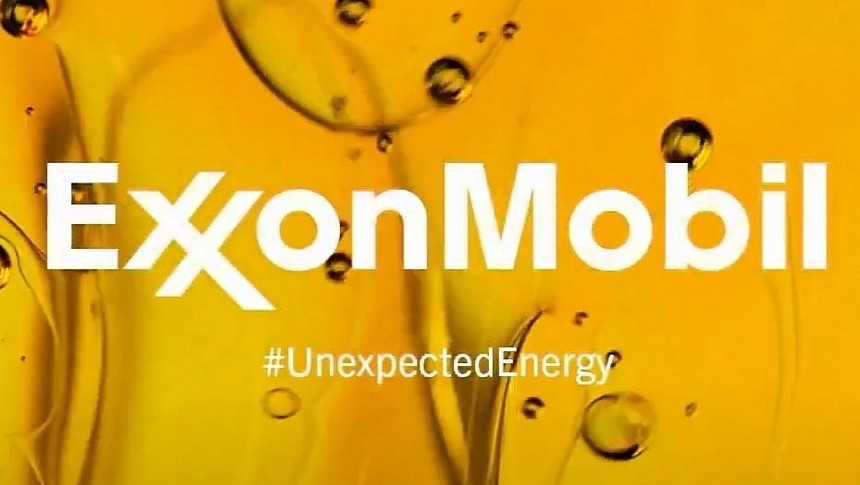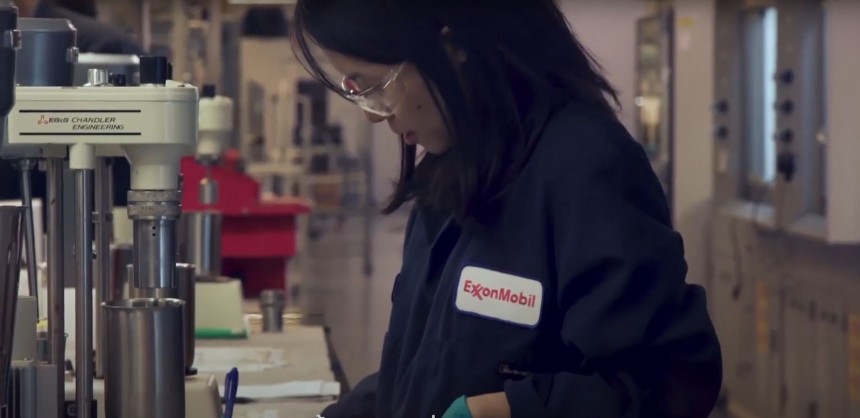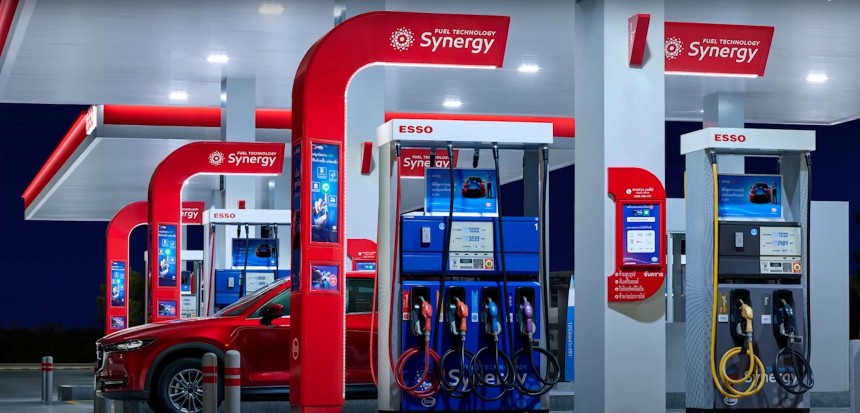We often watch movies that show how big corporations know the damage they are causing but prefer to hide them under the rug to tell people they are safe. Dark Waters and Thank You for Smoking are two great examples. We will probably see another one based on what Harvard researchers found out about Exxon. Not only did the company know about climate change, but it also tried to find new business streams and solutions to avoid it.
Science published the study in January, but CleanTechnica brought it to our attention only two days ago. Honestly, what the Harvard scientists discovered deserved to be with the Spotlight team – from The Boston Globe – or in The New York Times pages. It offers more journalistic value than scientific relevance.
Exxon's scientists previewed and modeled climate change with incredible precision from 1977 to 2003. The company must still be doing that, but the internal documents the Harvard scientists obtained can only prove that this happened in this period. That vindicates Naomi Oreskes. The Harvard professor wrote a book with Erik Conway called "Merchants of Doubt" that stated the oil company knew about climate change.
The controversial aspect of the story is that Exxon denied that fossil fuels made Earth's temperature rise. Oreskes told The Harvard Gazette that "company's spokesmen denied, challenged, and obscured this science, starting in the late 1980s/early 1990s." Geoffrey Supran, the lead author of the revealing study, confirmed that "Exxon accurately predicted global warming years before it turned around and publicly attacked climate science and scientists."
That is just part of the story. CleanTechnica also stated that Exxon was researching fossil fuel alternatives to replace its main product. First, the oil giant took a look at solar power generation. NPR wrote that the man in charge of these efforts was Adam Louis Shrier, an engineer who had to look for new perspectives for the company.
According to Shrier, the company executives were asking what would happen if OPEC decided it wanted more money for its oil, and people just gave up buying it. Exxon wanted to sell energy and started exploring new possibilities. One of these energy alternatives was solar power. Elliot Berman founded Solar Power Corporation in 1968. In 1970, he contacted Exxon, and the oil company started investing in his startup in 1973. When Shrier said that solar would demand at least one more decade to be self-sustainable, Exxon decided to close the startup. It was 1984.
Exxon must have realized that solar and wind power alone were not a feasible solution if they could not store the energy they generated. Peak production hours do not match peak demand hours, which makes storage a must.
Nowadays, we have several storage solutions in evaluation, such as creating "water batteries," which consist of water reservoirs in high locations. When renewable energy is produced, it powers pumps to fill these reservoirs. When this energy is necessary, the water is released and moves a generator to get that electricity back. It works like a reversible hydropower plant. Switzerland's Nant de Drance is a good example. China is using a similar system, but it uses compressed air. EnergyDome proposed the same concept, only with compressed carbon dioxide. Another option is using flow batteries. Again, Exxon investigated one that uses zinc-bromine.
This flow battery is considered a hybrid because it does not work with a catholyte and an anolyte. The first is a positively charged liquid, while the second is negatively charged. In a standard flow battery, these liquids interact through an ion-selective membrane that also captures the electricity generated by their interaction. The zinc-bromide battery has only one electrolyte: zinc bromide. When it is charged, zinc plates into the conductive electrodes, forming bromine, which is stored in a separate section of the battery. The discharge process makes bromine react with the plated zinc and create zinc bromide again, releasing electricity in the process.
Exxon started studying this flow battery in the 1970s, joining forces with the Sandia National Laboratories to focus on zinc-bromine flow cells. In the same decade, Johnson Controls bought the technology from the oil company to use it in battery electric vehicles (BEVs). So far, the only company promising to employ flow batteries in its cars is nanoFlowcell with the Quantino.
This all only demonstrates the other flip of a coin I mentioned in a recent text. Patrick T. Brown denounced that scientists are focusing on climate change effects instead of investigating other factors that may be more important in dealing with things exclusively attributed to the worsening of the greenhouse effect, such as wildfires. The message from the scientist was that people were getting more worried about following the official narrative to be considered relevant than about doing relevant research.
At the same time, Harvard's study showed an oil company using relevant research to deny its effects while looking for business options to escape the depletion of fossil fuels and the damage they cause. In a world of extremes, more nuanced and rational scenarios are ignored. Exxon could try to compensate for that by funding or promoting renewable fuels, better flow batteries, or anything that could help deal with climate change. However, at this point, credibility is the question. Who would believe the oil company is genuinely interested in a sustainable business rather than higher profits?
Exxon's scientists previewed and modeled climate change with incredible precision from 1977 to 2003. The company must still be doing that, but the internal documents the Harvard scientists obtained can only prove that this happened in this period. That vindicates Naomi Oreskes. The Harvard professor wrote a book with Erik Conway called "Merchants of Doubt" that stated the oil company knew about climate change.
The controversial aspect of the story is that Exxon denied that fossil fuels made Earth's temperature rise. Oreskes told The Harvard Gazette that "company's spokesmen denied, challenged, and obscured this science, starting in the late 1980s/early 1990s." Geoffrey Supran, the lead author of the revealing study, confirmed that "Exxon accurately predicted global warming years before it turned around and publicly attacked climate science and scientists."
According to Shrier, the company executives were asking what would happen if OPEC decided it wanted more money for its oil, and people just gave up buying it. Exxon wanted to sell energy and started exploring new possibilities. One of these energy alternatives was solar power. Elliot Berman founded Solar Power Corporation in 1968. In 1970, he contacted Exxon, and the oil company started investing in his startup in 1973. When Shrier said that solar would demand at least one more decade to be self-sustainable, Exxon decided to close the startup. It was 1984.
Exxon must have realized that solar and wind power alone were not a feasible solution if they could not store the energy they generated. Peak production hours do not match peak demand hours, which makes storage a must.
This flow battery is considered a hybrid because it does not work with a catholyte and an anolyte. The first is a positively charged liquid, while the second is negatively charged. In a standard flow battery, these liquids interact through an ion-selective membrane that also captures the electricity generated by their interaction. The zinc-bromide battery has only one electrolyte: zinc bromide. When it is charged, zinc plates into the conductive electrodes, forming bromine, which is stored in a separate section of the battery. The discharge process makes bromine react with the plated zinc and create zinc bromide again, releasing electricity in the process.
Exxon started studying this flow battery in the 1970s, joining forces with the Sandia National Laboratories to focus on zinc-bromine flow cells. In the same decade, Johnson Controls bought the technology from the oil company to use it in battery electric vehicles (BEVs). So far, the only company promising to employ flow batteries in its cars is nanoFlowcell with the Quantino.
At the same time, Harvard's study showed an oil company using relevant research to deny its effects while looking for business options to escape the depletion of fossil fuels and the damage they cause. In a world of extremes, more nuanced and rational scenarios are ignored. Exxon could try to compensate for that by funding or promoting renewable fuels, better flow batteries, or anything that could help deal with climate change. However, at this point, credibility is the question. Who would believe the oil company is genuinely interested in a sustainable business rather than higher profits?















































